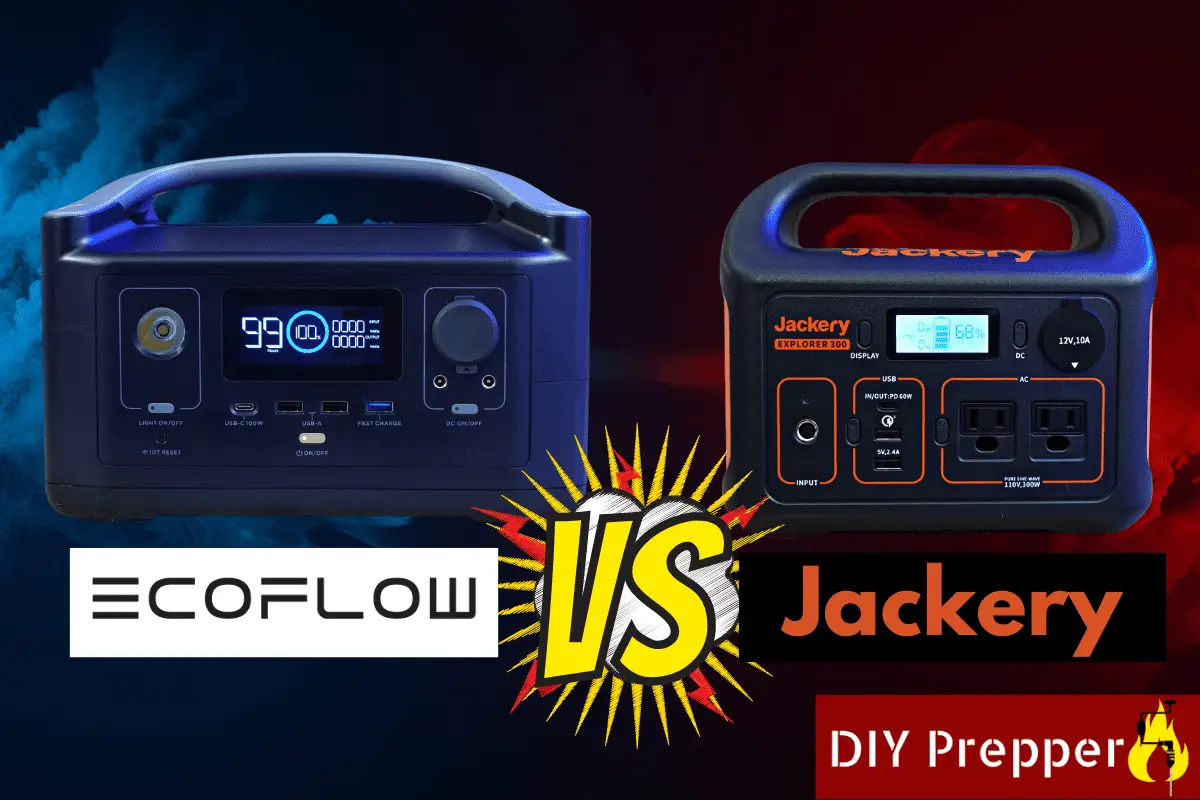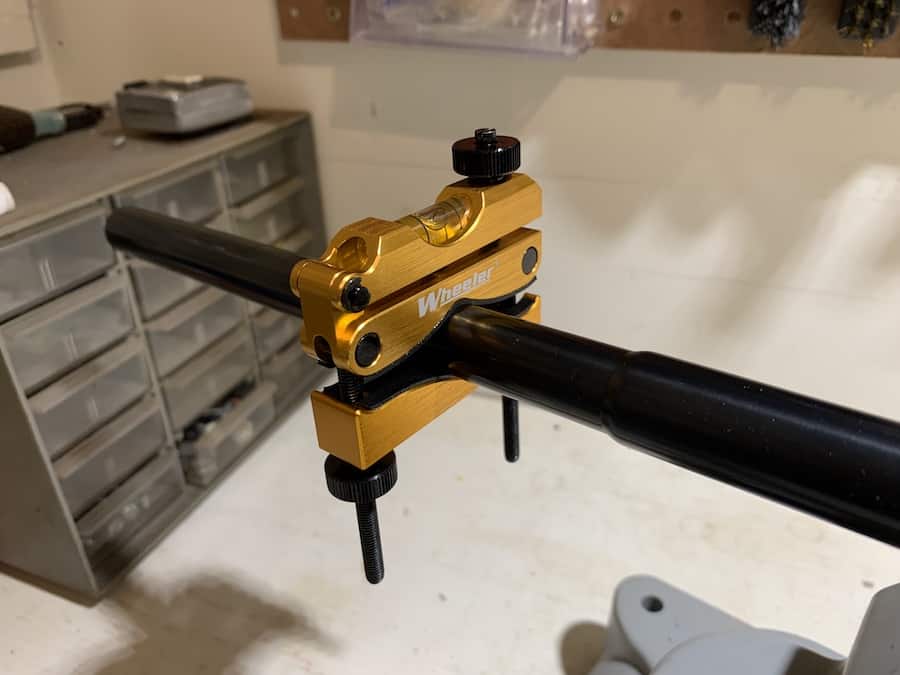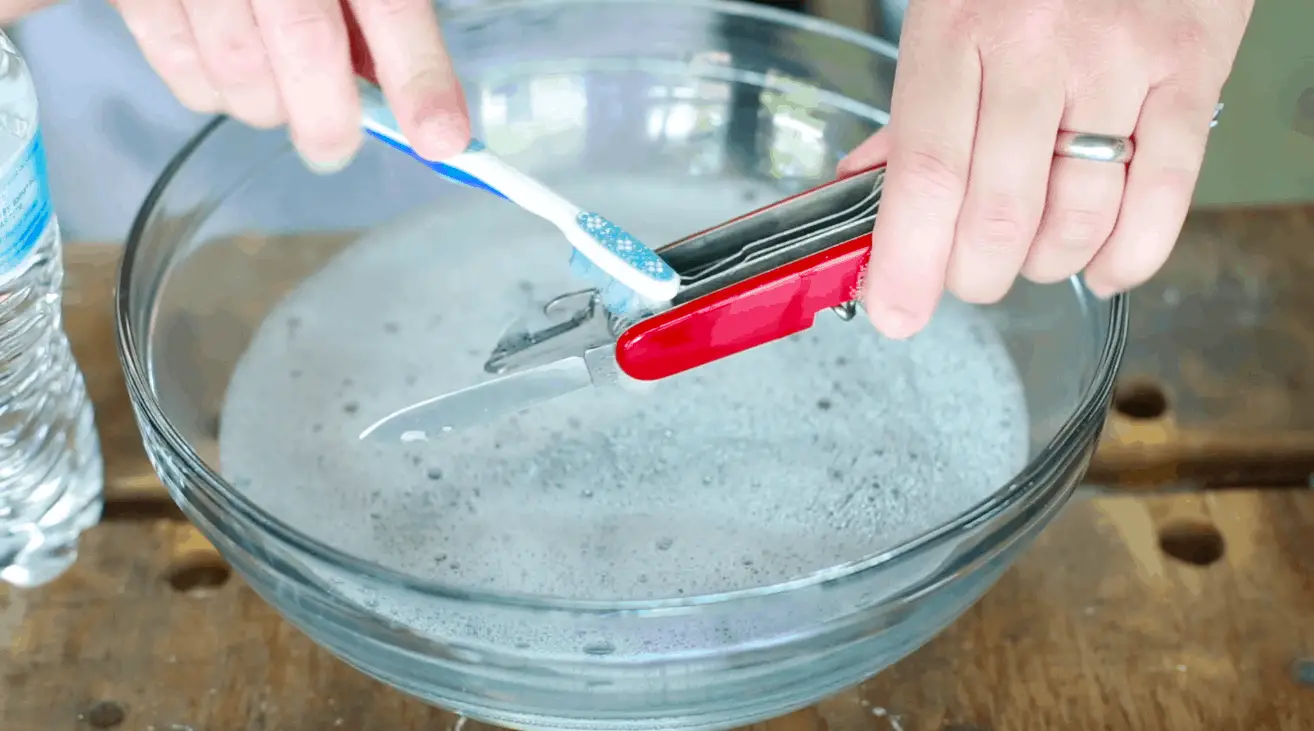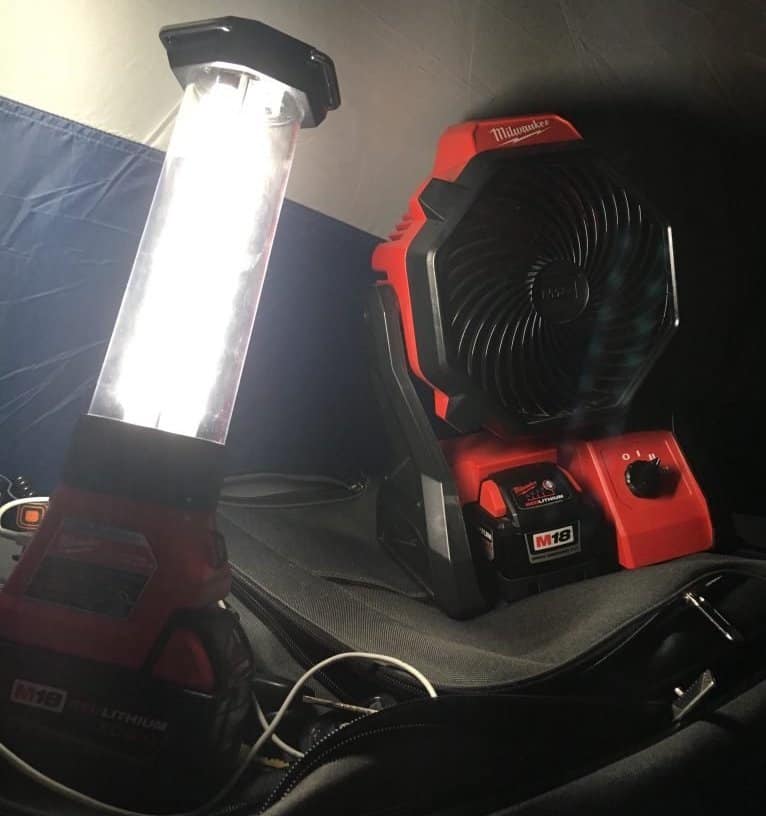Power Tools Every Prepper Needs
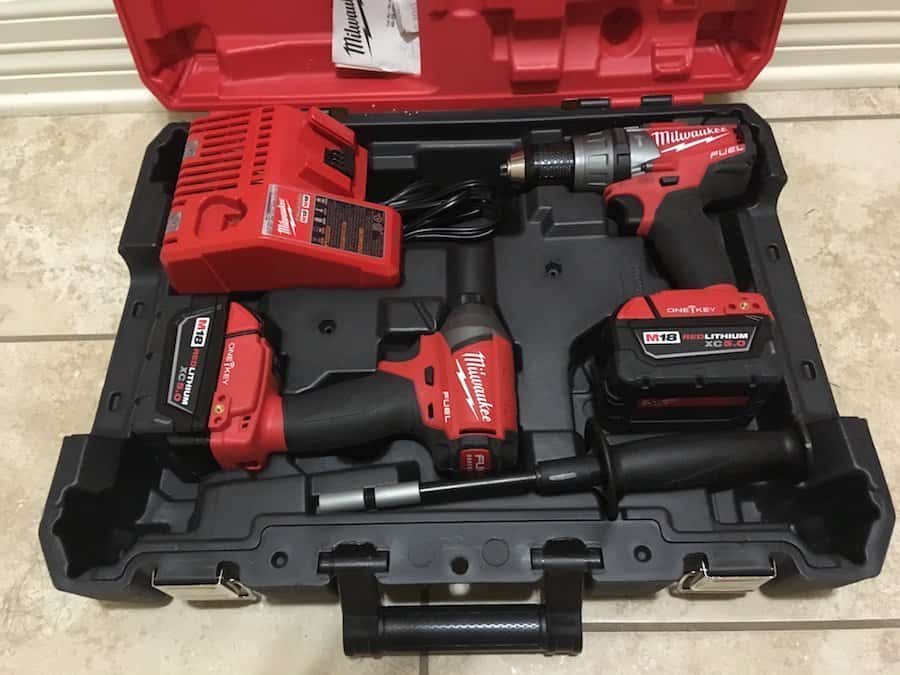
When preppers talk about tools, most of the time they focus on hand-powered tools, such as crosscut saws and hand drills. This is because long-term grid-down or TEOTWAWKI scenarios tend to grab more attention than more common emergencies like storm damage. Although having manually-powered tools and knowing how to use them is important, every well-rounded prepper needs a few power tools as well.
These are the power tools that every prepper needs to have:
- Cordless Drill
- Cordless Impact Driver
- Reciprocating Saw (Sawzall)
- Circular Saw
- Angle Grinder
- Car Charger for Batteries
- Bench Grinder
- Chainsaw
Having power tools will allow you to work quickly to prepare for an impending emergency, like a hurricane, or act fast during its early stages. Another thing to consider is that even during a prolonged emergency, power sources may still be available, but on a smaller scale. Having power tools will allow you to take advantage of the power sources that do exist and get more work done. If you have cordless tools, you can charge them wherever power is available and use them when needed.
These tools will help make you more productive when doing DIY projects now and may also help make a disaster much less costly. Being able to quickly board up windows and make other repairs can prevent damage to your property or stop it before it gets worse.
Cordless Drill
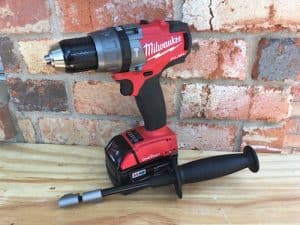
A cordless drill is one of the most important power tools that every prepper needs to own. Cordless drills are useful for numerous small jobs around the house and are indispensable for larger projects. You can use them to hang cabinets, repair a deck or fence, and board up windows. If you don’t have any power tools, a cordless drill should be the first thing you buy.
Types of Cordless Drills
Cordless drills come in a couple of different types. The first one is a drill/driver. This type of tool drills holes in wood, metal, and plastic, and will also drive screws. The second type of cordless drill is a hammer drill. Like a drill/driver, it will drill holes in wood, metal, and plastic as well as drive screws. However, you can also use a hammer drill to make small holes in concrete. This is very useful if you need to drill pilot holes for masonry screws such as Tapcons.
Between the two types of drills, I recommend that every prepper purchase a hammer drill rather than a drill driver. Although they cost a little more, their additional versatility justifies the expense. They can do everything that a regular drill/driver can do but with the added benefit of being able to drill into concrete. Even if you don’t drill into masonry very often, you will be glad you have a hammer drill if the need arises. A regular drill/driver does a poor job drilling through concrete. It takes forever and will wear you, the drill, and your bits out.
Features to Look for in a Drill:
Get a Powerful Drill
The first thing to look at when selecting a drill is its power. This is measured in torque and speed. A drill with a high torque rating will be able to drill larger holes than those with less torque. Look for a drill that can produce at least 1,000 in. lbs. of torque. This may seem like a lot, but you will need it if you ever need to use large spade bits or hole saws in your drill. When considering speed, choose a drill that is capable of at least 2,000 rpm. Higher rpm’s mean faster drilling.
Ratcheting Chuck
A drill’s chuck, or the portion of the drill that holds bits, is incredibly important. Good drills feature a “ratcheting chuck”. This is a mechanism that allows the user to hand tighten the chuck around a bit with enough force that it won’t slip during use. Other types of chucks, such as non-ratcheting or keyed chucks are not as user-friendly. Non-ratcheting chucks do not tighten with enough force to hold a bit. They can even come loose while you are drilling, causing your bit to get stuck in whatever you are drilling into. Keyed chucks require you to keep up with an L-shaped key to tighten and loosen the chuck. These keys are easy to lose, and having to use one to replace bits slows you down.
Side Handle
The drill you purchase should also include a removable side handle. Side handles reduce the chance of you suffering a kickback-related injury while drilling. Kickback occurs when a drill bit gets stuck and the rotational force from the drill transfers into your arm. This is fairly common and could break or sprain your wrist. A side handle gives you more control over the drill and reduces the chance of you becoming injured if kickback occurs.
Cordless or Corded Drill?
If given a choice between a corded drill and one that is cordless, I will choose the cordless drill every time. The main reason for this is that cordless drills are safer to use than a corded one. Cords are really easy to get tangled up in, especially when you are on a ladder. I almost fell off of a step ladder while hanging a cabinet in my garage because my feet got tangled up in my extension cord.
Cordless drills are also much more convenient to use than a corded one. Whenever I used a corded drill, I had to fetch an extension cord, plug it in, and hope that it reached wherever I needed to work. Then I would have to unplug the cord, reel it back up, and store it. However, with a cordless drill, all I have to do is plug in a battery. I am free to move wherever I want to without being restrained by a cord. For me, a cordless drill is a much better option.
Drill Accessories
Here are some accessories you will need with your drill:
Black Oxide Drill Bits
These drill bits are inexpensive and do a good job of drilling holes into wood and plastic. They will wear out quickly if they are used in metal, and should never be used in concrete.
Titanium-Coated Drill Bits
While they are a little more expensive than black oxide drill bits, titanium-coated bits do a better job cutting through metal but will still cut through wood and plastic with ease. However, do not use them to drill into concrete. The ones with a 1/4 inch hex shank are really nice. This design prevents the bit from slipping in the drill’s chuck and will allow the user to insert them in an impact driver.
Cobalt Drill Bits
If you drill through metal frequently, cobalt drill bits will make your life a lot easier. Cobalt bits last longer and do a better job cutting into metal. Be sure to use cutting oil, and don’t let the bit overheat.
Masonry Drill Bits
When drilling through masonry, you must use drill bits specifically designed for the purpose. Normal twist bits will overheat and become dull long before they finish even small holes. Masonry drill bits have a special shape and coating that allows them to withstand the pounding motion of a hammer drill while boring through masonry.
Spade Bits
Spade bits, also known as paddle bits, are used to drill larger holes in wood than what twist bits are normally used for. Although the holes they leave aren’t as clean as those left by twist bits, they are perfect for drilling through studs when running electrical lines.
Drive Bit Set
When driving screws and other fasteners, you will need a comprehensive kit that contains all of the driving tips you may need. These include Phillips, Allen, and Torx bits. Also, be sure that you get a quick release bit holder with a sleeve that will help hold a screw in place. I prefer drive bit sets that are impact-rated. These tend to last longer and work in impact drivers as well.
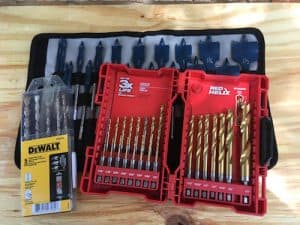
Impact Driver

Another power tool that every prepper needs is an impact driver. These are a mix between a drill and an impact wrench and are primarily meant to drive screws or lag bolts. Due to how they operate, they are less likely to strip out screw heads and slip out of place while driving fasteners. They may be a little too powerful for delicate work, but they make larger-scale work much easier.
Impact drivers are especially useful when driving long screws into dense materials, like driving deck screws into lumber. Compared to using a regular drill, they greatly reduce strain on the user. Also, there is also no risk of kickback when using an impact driver. This makes projects that use a lot of screws much more tolerable.
Buying Tips
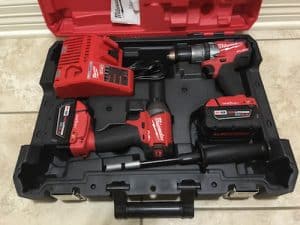
Most impact drivers are cordless and come in kits that include a power drill and a couple of batteries. I have owned the Milwaukee in the picture for a while now and really like it. You can find a newer version by clicking here.
If you don’t have a cordless drill or impact driver, buying a kit such as this is a great way to get what you need and save money at the same time. Having a cordless drill and impact driver as a set will reduce the amount of time that you spend swapping out bits.
When selecting a kit, spend a little extra money and buy a kit that comes with 5.0 ah or larger batteries. This will allow you to keep working longer and have enough power to operate more power-hungry tools like circular saws. Although you may not have these tools now, it is nice to have room to grow in the future.
Reciprocating Saw

A reciprocating saw is one of the most versatile power tools and is one that every prepper should own. As long as you use the right blade, you can cut through almost any material. My reciprocating saw or “Sawzall” does most of its work cutting tree limbs using a pruning blade. However, I also have blades that allow me to cut through nail-embedded wood as well as solid metal. Some firefighters even use reciprocating saws to cut away mangled wreckage to rescue accident victims.
When you buy your reciprocating saw, purchase a large assortment of blades to go with it. Having a wide variety of blades will allow you to use your reciprocating saw for more tasks. Also, blades don’t last forever, so having a supply of them will help you keep working when blades wear out.
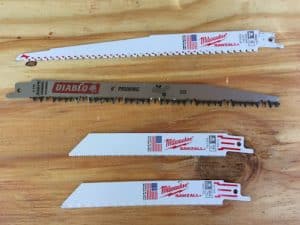
Cordless or Corded Reciprocating Saw?
Although many people will disagree with me, I prefer a cordless reciprocating saw. The reason for this is that a cordless reciprocating saw can be used in areas without power, whether the outage is caused by a disaster or simply by location. With a cordless reciprocating saw, all you need is a few charged batteries.
If you are planning on purchasing a cordless reciprocating saw, get one from a professional lineup, like Milwaukee, Makita, or Dewalt. A brushless motor is preferable as it will last longer and is more energy-efficient than a brushed one. Cordless reciprocating saws run best with batteries that have a 5.0 ah capacity or larger. Batteries this large will give you plenty of power and last long enough to get the job done.
Circular Saw
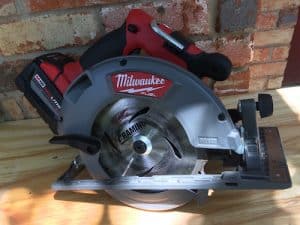
A circular saw is one of the most important power tools that a prepper needs to own. Circular saws, when used properly, allow the user to make accurate crosscuts and rip cuts in various types of materials. If you have the right blade, you can even cut through metal with one. Although circular saws come in different sizes, I have found those with 7 1/4 inch blades to be the most useful. They can cut through dimensional lumber and multiple layers of sheet materials such as plywood. 7 1/4 inch blades are also the most commonly-available size circular saw blade, so if you have a saw that uses them, you should have no problem finding whichever type of blade you need.
Having a circular saw is helpful if you need to board up your windows before a storm or make quick temporary repairs afterward. They are also essential tools on almost any job site. In skilled hands, a circular saw can perform much of the work that would normally be done by a miter saw or table saw.
Cordless or Corded Circular Saw?
Whether or not you should get a cordless or corded circular saw will depend on what type of building you will be doing and where. If you work construction or are planning on building a house, a corded “worm-drive” circular saw, such as the Skill Mag 77 would be an excellent choice.
However, for most preppers, a cordless circular saw would probably be more useful overall. This is due to being able to run off of batteries instead of AC power, which may go dead. Although the batteries will deplete quickly, they should still be able to get a decent amount of work done and can be recharged offsite or by using a vehicle charger. Like cordless reciprocating saws, be sure you get your circular saw from a professional brand. Cordless circular saws also work better with larger batteries, 5.0 ah and larger.
Angle Grinder
An angle grinder is another power tool that every prepper needs. They are powerful and can perform several functions. Which function the grinder performs depends on what attachment the user has installed. As its name suggests, angle grinders can grind and shape materials such as metal and stone. However, angle grinders can also cut metal and concrete if the correct disc is used. They can also remove rust, paint, as well as polish metal by using wire wheels and cups.
When choosing an angle grinder, get one that is the right size for your needs. For most people, a 4 1/2 inch angle grinder will do just fine. This is the most common size for angle grinders, so attachments are readily-available. Larger angle grinders work well for cutting thick pieces of concrete and polishing large workpieces.
Types of Angle Grinder Attachments
- Grinding Discs: Use these to knock down high spots and ridges on stone and metal workpieces, depending on the type of disc you have. (Metal for metal and stone for stone)
- Cut-off Discs: These make cuts in metal or stone, once again depending on the type of wheel you are using. If you have ever used a cut-off wheel in a Dremel tool, these are very similar. However, they are much larger and have a lot more power behind them.
- Diamond-Tipped Discs: These are cut-off discs that have diamond-tipped ends. Having diamond-tipped ends allows them to cut through hard materials such as granite and asphalt.
- Sanding Pads: These are similar to the sanding pads you would use with different types of power sanders. They use velcro or other another type of easily removable backing and attach to a base that is secured to the grinder.
- Wire Wheel and Cup Brushes: These brushes have steel bristles and work well to clean paint and rust off of metal surfaces.
- Flap Sanding Discs: These are discs that consist of several overlapping layers of sanding material that surround the center of the disc. They work well for light stock removal and finishing.
Cordless or Corded Angle Grinder?
Although cordless angle grinders are useful to their portability, I recommend getting a corded angle grinder first. They use a lot of power, and many of the tasks that you perform with one will likely drain batteries quickly. For example, using a wire wheel to remove paint requires the grinder to run for a long period of time. Depending on the size of your batteries, you may go through several before the job is done, especially if your workpiece is large.
While a corded angle grinder gives you tons of power, a cordless angle grinder will give you portability and convenience. They are good for smaller jobs where you only need to make a few cuts or grind small amounts. If you work away from your home or somewhere without AC power, they are very useful. However, a corded angle grinder will do everything a cordless one can do, as long as you have AC power and an extension cord.
Power Tool Battery Car Charger
If you have cordless tools, you need to have multiple ways to charge your batteries. If you cannot recharge their batteries, your power tools are useless. Several tool companies, including Milwaukee, Makita, and Dewalt offer vehicle chargers for their power tool batteries. Having one of these will expand your options for keeping your batteries charged and your tools in use.
Chargers such as these plug into your vehicle’s 12-volt power port. After this, they work the same way as a regular wall charger. They transfer power into your battery and usually have an indicator light to show when it is fully charged. Some even have shutoff sensors that will deactivate the charger if your vehicle battery’s power falls below a certain level.
Air Compressor
An air compressor is another power tool that every prepper needs to own. I use mine to top off the air pressure in tires and to clean out firearm assemblies. However, these small jobs only represent a small fraction of what a good air compressor is capable of.
Air compressors can operate numerous types of pneumatic tools, including impact wrenches, paint sprayers, air ratchets, as well as several types of grinders and nail guns. The main limiting factors to what an air compressor can do are how large the tank is and its CFM, or how many cubic feet of air it moves per minute.
Small one-gallon “pancake” style compressors are good for topping off the air in a tire and operating small nail guns, like brad nailers. If you intend on using an impact wrench, sander, or grinder, you will need a compressor with a larger air tank and a higher CFM rating.
While some air compressors are gas-powered, I recommend getting an electric one. Gas-powered compressors will emit exhaust, making them dangerous to use in confined spaces, such as a garage. Electric air compressors can be safely used indoors and outdoors since they do not give off any harmful fumes. If you need to use an electric compressor somewhere without power, they can be plugged into a generator.
Bench Grinder

Another power tool that every prepper needs to own is a bench grinder. They are multipurpose power tools that can grind, sharpen, polish, and clean tools and other objects. Like an angle grinder, the function that a bench grinder performs will depend on which wheel is installed in it. Abrasive wheels will grind, shape, and sharpen objects, while wire wheels and cloth wheels can clean and polish surfaces.
Chainsaw
One of the most common problems people face after storms and natural disasters is fallen trees and limbs. These can severely damage or destroy homes and other structures. Fallen trees and limbs can also block roadways, delaying how quickly emergency personnel and volunteers can render aid to those that need it. Because of this, a chainsaw is a power tool that every prepper needs.
Chainsaws are capable of cutting through trees and limbs quicker than any other type of saw available. Depending on their size, they can be used for jobs as small as pruning small to medium-sized limbs, all the way to cutting down a large pine or oak tree.
If you own a chainsaw, be sure to have the fuel and fluids you need to keep it running. Also, stock additional chains for replacement and wedges to prevent your chainsaw from binding while in use.
Conclusion
One of my favorite things about having power tools is that they help make me more self-reliant. When I can take care of small problems around the house, it saves me money and helps me to learn new skills. Be sure you educate yourself on how to use whichever tools you buy so you can use them safely and effectively.

